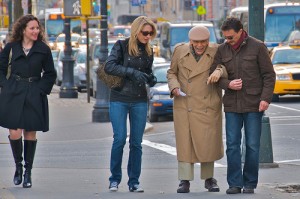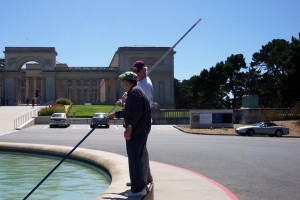I believe mindfulness is really at the heart of all healing. The ability to observe without judgement just makes everything so much easier. 
My first experience with mindfulness was the opening paragraph of a book where a woman plunges into cold water, voluntarily, for a morning swim. When I first walk into cold water, it’s usually a lake where my sons are begging me to come in, my muscles are clenched, my face is already twisted up and my first reaction is usually “Oh My GOD THIS IS COLD.” It’s unpleasant, to say the least, until I get used to it, and might even involve some under-the-breath swearing.
But in this story, the woman reminds herself that the feeling of the cold water on her skin is just a sensation, not inherently good or bad, and encourages herself to notice the tingling but not to judge it as pleasant or unpleasant.
That idea was completely eye-opening to me. Seriously? You can do that? I started trying it out with other sensations, like music I thought I didn’t like, food I’d already rejected, and especially emotions. I still gasp when I enter a cold pool or lake, but it’s really not as bad as I used to make it.
This all happened in conjunction with a gifted supervisor telling me that my job was to convince clients to be curious about their inner life before judging and trying to change it. The idea that I could describe my emotions without shame and without judgement was a new one, and it has influenced both my life and my professional work forever.
It wasn’t until several years later that I realized all this fits under the umbrella of mindfulness.
Now, I don’t practice mindfulness meditation that often, to be honest. I do practice its teachings daily. Even if you’re convinced you can’t sit still for 15 minutes, here are some on-line resources to help you integrate some mindfulness into your life:
Mindfulness Therapy for Phobias
Dr. Peter Strong describes how a structured mindfulness meditation therapy can work on a phobia of spiders. But you can take some of these ideas and apply them to whatever specific thing you’ve attached your anxiety to, whether it’s flying, elevators or snakes.
Mindful Eating
I also firmly believe that mindful eating is the way out of disordered eating. This New York Times article describes the path of mindful eating.
It reminds me of the Zen story of the master and student sharing an orange, The student pops a segment in his mouth and reaches for another. The master says, in effect, “Hey, buddy, you haven’t finished the one in your mouth yet. Why are you already going for the next one?” By reaching for the next bite, the student’s not fully experiencing the part he’s eating.
One of my favorite blogs, Zenhabits, also has a quick run-down on how to incorporate mindful eating into your meal.
Mindful Walking
Taking a mindful walk is a really quick way to ground yourself in the here and now. Dr. Salters-Pedneault has written, in About.com’s mental health section, an accessible guide to taking a mindful walk that you can do as soon as you get up from the computer.
Mindful Breathing
“I do deep breathing, it doesn’t work,” I hear over and over in my office. Most people have learned to take big breaths to relax, but that’s not really the point of mindful breathing. Yes, breathing into the belly rather than the chest is more relaxing. But it doesn’t stop there. The point of mindful breathing is to pay attention. Pay attention to the breath as it enters your body, and as it leaves. That’s it. Notice the thoughts that come and go, but let them float away and return your attention to the breath. By doing that, we’re honoring the here and now, what’s in this moment, rather than all the fantasy lands our minds want to take us to. And gradually, we get more control over that part of our brain that sometimes feels so out of control.
The above link gives you a good start. If you want a little more variety, try these three exercises from Dr. Andrew Weil.
So there you have breathing, eating and walking: Three things you do every day (hopefully). Start simple, and in my experience, mindfulness grows like potted bamboo – easy to grow, easy to take care of, but not taking over everything in your life. Instead, it helps you focus on those things you actually want to focus on.





















